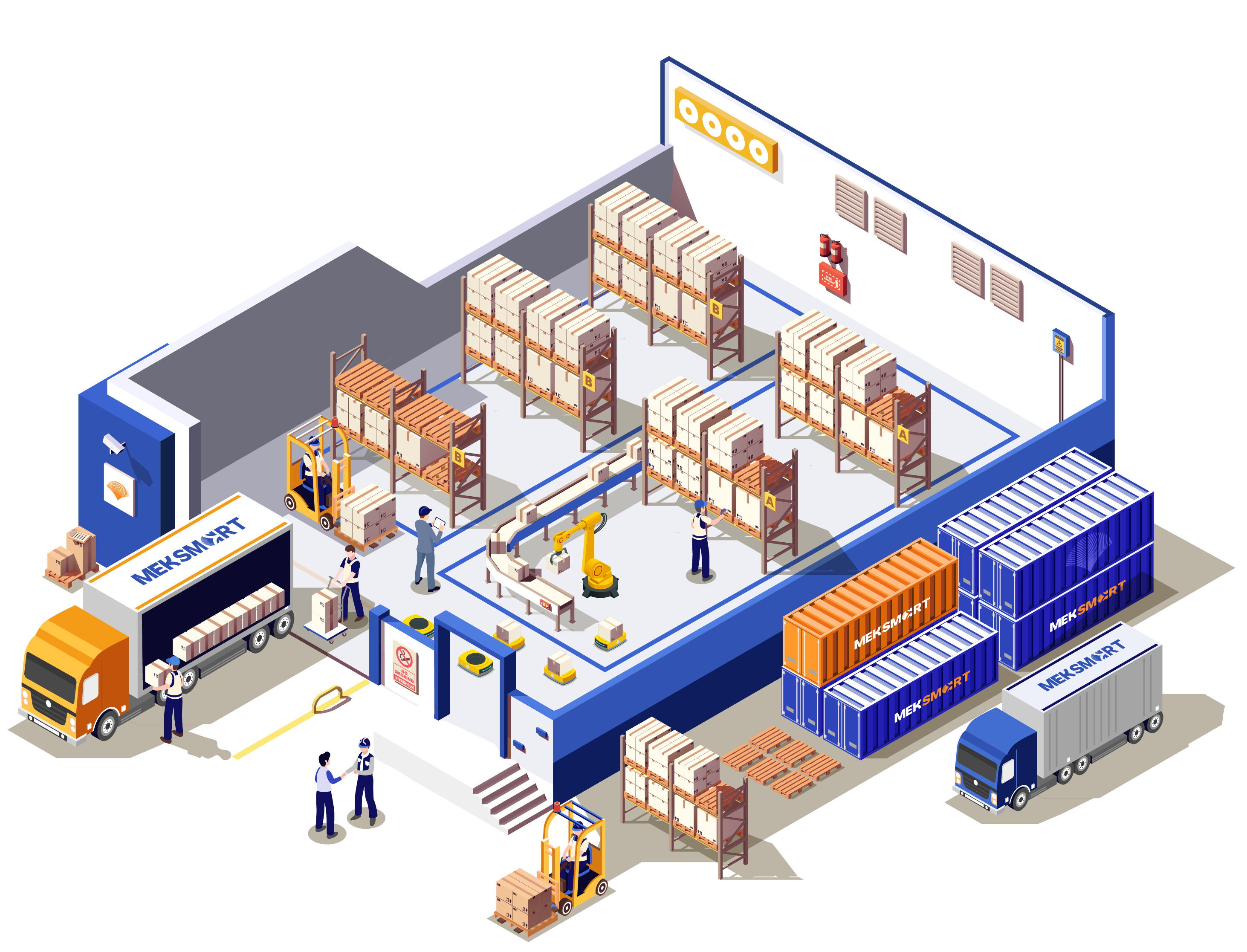MEKSMART
GENERAL NEWS
Author: Meker Meksmart
Update: 10/11/2022
E-WAREHOUSE MANAGEMENT SYSTEM: OVERVIEW & BENEFITS
These years, the demand for eCommerce has sharply increased, resulting in supply chain challenges for various industries. While the increasing demand for eCommerce is an encouraging sign, eliminating congestion in the supply and fulfillment is the need of the hour.
Yet, are logistics and warehousing vendors equipped for this? Is it possible for them to meet the requirements for online retail?
According to Forrester's research, online retail is expected to take up 35 percent of all retail by 2025. Accordingly, at least 64 million sq feet of additional warehousing space will be needed for online retail.
Besides meeting the higher demand for storage, warehouses are called on to deal with more complications in B2C fulfillment. This leads to higher operations and a bigger room for errors because it demands:
- Performing conventional inventory and warehouse audits
- Managing shelf, pallet, and bin locations of SKUs
- Running inventory reports according to category
- Recording stock levels
- Reordering products on time to thwart stock-outs
- Tracking inventory availability and turnover
In spite of repetitive and tedious tasks, fulfillment remains the drawback of eCommerce. Meanwhile, 3PLs and warehouse companies that figure out a cost-effective method to perform the fulfillment and its activities still dominate the industry. These businesses still contribute to end customer satisfaction and gain higher profit margins for customers and themselves.
To guarantee optimal fulfillment, warehouse operators better restructure workflows and facilities. In this case, applying an e-warehouse management system or WMS appears to be a wise choice. The WMS delivers technological infrastructure to eliminate costs, save time, optimize staff, and achieve accuracy.

What Is An E-Warehouse Management System?
A warehouse management system is a cloud-based software allowing retailers, manufacturers, 3PLs, and warehouses to optimize stock management and fulfillment processes.
This software can enable products to move via warehouses cost-effectively and quickly. Also, it delivers high inventory visibility in transit or the warehouse.
The WMS accommodates what retailers and brands expect, like coherent process functions to cut order latency, fulfillment errors, and processing costs. It also provides value-added offerings such as final assembly, repackaging, refurbishment, and kitting, to name a few.
Advantages of e-Warehouse Management System
Besides understanding what a WMS can do, it is imperative to know how it is introduced in various circumstances. To make everything easier for you, below are some advantages that a WMS provides.
Inventory rotation management
Optimal inventory and storage management can ensure that proper rotation practices are followed.
Optimal use of warehouse space
The WMS can analyze the available space in the warehouse based on product features. Meanwhile, it can minimize labor costs and downtime arising.
Streamlined logistics and improved inventory accuracy
The WMS will make the process of picking, packing, and shipping faster. Besides, it can reduce returns and errors. It can create barcodes for goods with specifications and locations. Warehouse operators can locate the products exactly and prep them in no time.
The WMS can also produce delivery labels with the right details so that the products can be delivered to the client exactly.
Wrapping Up
So now you know about the e-warehouse management system. In a nutshell, this system accommodates various functions to help businesses operate their logistics and supply chain operations in a smoother and fast way.
Besides, the WMS can prevent unexpected risks like human errors and provide inventory accuracy.











